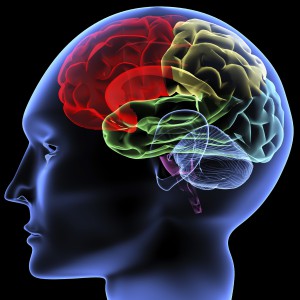Possible Concussion? Stay out of the Game, New Guideline Recommends
 Athletes suspected of experiencing a concussion should be immediately removed from play, according to a new guideline released by the American Academy of Neurology.
Athletes suspected of experiencing a concussion should be immediately removed from play, according to a new guideline released by the American Academy of Neurology.
This is a change from using concussion grading systems, said Dr. Christopher C. Giza, a co-lead guideline author, in a news release from the AAN. Instead, Giza said, each athlete should be assessed individually before returning to the game.
“There is no set timeline for safe return to play,” Giza said in the news release.
The new guideline also suggests that athletes should not be allowed to play until they have been assessed by a licensed health care professional who is trained in concussion. Players should “return to play slowly and only after all acute symptoms are gone,” the release states. “Athletes of high school age and younger with a concussion should be managed more conservatively in regard to return to play, as evidence shows that they take longer to recover than college athletes.”
When a person has a concussion, their symptoms may include a headache or sensitivity to light. They could have changes in their reaction time, balance and coordination. Other signs are a loss of memory, judgment, speech and sleep. Losing consciousness happens in fewer than 10 percent of cases, the release states.
“If in doubt, sit it out,” said Dr. Jeffrey S. Kutcher, Unversity of Michigan Medical School in Ann Arbor. “Being seen by a trained professional is extremely important after a concussion. If headaches or other symptoms return with the start of exercise, stop the activity and consult a doctor. You only get one brain; treat it well.”
The guideline, published online in the March issue of Neurology, has been endorsed by a broad range of athletic, medical and patient groups such as: the National Football League Players Association, the American Football Coaches Association, the Child Neurology Society, the National Association of Emergency Medical Service Physicians, the National Academy of Neuropsychology, the National Association of School Psychologists, the National Athletic Trainers Association and the Neurocritical Care Society..
The authors of the guideline reviewed all available research published through June 2012. Other findings include:
- Among the sports in the studies evaluated, risk of concussion is greatest in football and rugby, followed by hockey and soccer. The risk of concussion for young women and girls is greatest in soccer and basketball.
- An athlete who has a history of one or more concussions is at greater risk for being diagnosed with another concussion.
- The first 10 days after a concussion appears to be the period of greatest risk for being diagnosed with another concussion.
- There is no clear evidence that one type of football helmet can better protect against concussion over another kind of helmet. Helmets should fit properly and be well maintained.
- Licensed health professionals trained in treating concussion should look for ongoing symptoms (especially headache and fogginess), history of concussions and younger age in the athlete. Each of these factors has been linked to a longer recovery after a concussion.
- Risk factors linked to chronic neurobehavioral impairment in professional athletes include prior concussion, longer exposure to the sport and having the ApoE4 gene.
- Concussion is a clinical diagnosis. Symptom checklists, the Standardized Assessment of Concussion (SAC), neuropsychological testing (paper-and-pencil and computerized) and the Balance Error Scoring System may be helpful tools in diagnosing and managing concussions but should not be used alone for making a diagnosis.
Source: The American Academy of Neurology
+ Is someone in your family an athlete? Learn about ImPACT™ Neurocognitive Testing. ImPACT™ is a computer-based program that tests multiple aspects of brain function. Athletes, especially those involved in contact sports who are susceptible to concussions, should have a test before the season begins, to establish a baseline. If they sustain a head injury, they should be retested. This gives athletic trainers, physicians and other health care professionals a comparison to determine if it is safe for the athlete to return to play.

